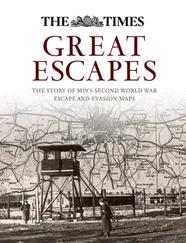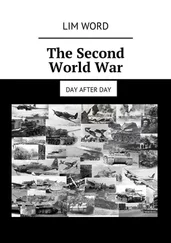Having established the timeframe, it should be pointed out from the start that it is impossible to obtain even a rough idea of the number of rape victims from the available source material and research. None of the occupying powers has investigated the matter systematically to date, despite some serious initial attempts by American researchers. The Moscow archives continue to protect the reputation of veterans, and little is known as well about the British and French involvement in mass rapes. We are thus reliant on estimates, which in this war, as in all wars, vary considerably. It is in the interests of former enemies to magnify the crimes of the other side. The individual victims and their families, however, often prefer to remain silent.
It is in any case impossible to identify incidents that would be considered sexualized or sexual aggression by today’s standards. [20] I retain the term ‘sexual aggression’. All other forms of ‘sexualized aggression’ were not perceived as such at the time. I also believe for political reasons that an understandable everyday expression is more important than academically differentiated objectivization, which risks excluding the people concerned.
In 1945 and the following years, rape was defined only as the direct physical overpowering of the woman’s resistance (in some cases at gunpoint) with vaginal penetration and credible opposition by the victim, to the exclusion of all other forms of sexual aggression. Women with even the slightest reputation for easy virtue were not generally recognized as rape victims, and ‘innocent’ girls and respectable wives were more readily believed than young, single women.
The difficulty in estimating numbers is well illustrated by the differences in the estimates. Some put the number of rapes at 11,000 by Americans (J. Robert Lilly); others say there were 2 million by the Soviets (Helke Sander), or 2 to 2.5 million during flight and expulsion (Ingeborg Jacobs). [21] The figures for Austria also fluctuate considerably. According to contemporary sources, there were between 70,000 and 100,000 cases in Vienna; see Barbara Stelzl-Marx, Stalins Soldaten in Österreich: Die Innensicht der sowjetischen Besatzung 1945–1955 (Vienna 2012), p. 411.
Even as the incidents were occurring, there were different figures in circulation. In the battle for Berlin alone, anything from 20,000 to 100,000 women were said to have been raped. [22] According to eyewitness Cornelius Ryan, The Last Battle (London 1966).
One eyewitness, the resistance fighter Ruth Andreas-Friedrich, was so overwhelmed by the acts of aggression she saw that she reckoned that one in two women in Berlin were victims. Doctors who treated the victims also cited large numbers, particularly in Berlin, where events were particularly fraught and where rumours spread like wildfire on account of the panic inspired by the Red Army.
In my opinion, the most serious estimate can be obtained by looking at the number of ‘occupation children’ fathered by occupying soldiers. In doing so, I combine two approaches. One is based on the assumption that around 5 per cent of the children of occupying soldiers were conceived as a result of an act of aggression. The other is based on the estimate that one in ten rapes resulted in pregnancy, and that of these pregnancies one in ten was brought to term. [23] The pregnancy rate following rape is currently 5 per cent in the USA and approx. 15 per cent in Mexico, see Susanne Heynen, ‘Erzwungene Schwangerschaft und Mutterschaft durch eine Vergewaltigung’, in: Kindesmisshandlung und -vernachlässigung (DGgKV) 6, no. 1/2 (2003), pp. 98–125. Barbara Johr assumes a 20 per cent rate for pregnancies following rape. In my opinion, she arrives at this high figure from hospital records. It is not clear, however, which women attended clinics at the time after being raped. I believe it was, above all, women who feared that they must be pregnant. Helke Sander and Barbara Johr also assume an abortion rate of 90 per cent, see Barbar Johr, ‘Die Ereignisse in Zahlen’, in: Helke Sander and Barbara Johr (eds.), BeFreier und Befreite: Krieg, Vergewaltigungen, Kinder (Munich 1992), pp. 46–73.
Obviously, both assumptions leave plenty of scope for error. The incidence of rape was higher among refugees in flight, and the number of abortions lower in rural regions. The official number of rape children is also approximate, as not all mothers admit that their children were conceived in that way, and others claimed rape in the case of consensual sex. Moreover, many of the babies died, particularly while their mothers were in flight, and were thus never registered. Not included in these figures are also rape victims who were too young or too old to become pregnant. There are repeated reports of the rape of prepubescent children, such as a ten-year-old girl in Kitzingen in summer 1946, who was sexually abused by an American soldier. [24] Bayerisches Hauptstaatsarchiv (BayHStA) MInn 80207 betreff Besatzungsmacht, Ereignisse und Sicherheitsstörungen, Bericht des Landeserkennungsamt Bayern of 28 June 1946.
The idea that it was mostly women of childbearing age who were raped is also a misconception.
Now to my estimates: according to information from the Federal Statistics Office of 10 October 1956, there were 68,000 illegitimate occupation children in care in the Federal Republic including West Berlin. This figure is known on account of the multiple surveys that have been carried out. One reason the statistics were obtained was for use as an argument in political discussion, not only in connection with financial reparations for women with unwanted pregnancies but also as a kind of moral quid pro quo. The question of whether an unwanted pregnancy could be considered ‘occupation damage’ was discussed for over ten years, both publicly and in parliament. These discussions, which I shall also come back to in detail, have not been studied at all to date.
Of the 68,000 illegitimate occupation children in the West, 55 per cent were fathered by Americans, 15 per cent by French, 13 per cent by British, 5 per cent by Soviets, 3 per cent by Belgians and 10 per cent by other nationalities. According to the mothers, 3,200 children were the result of rape. [25] Bundesarchiv (BA) Koblenz B/126/28038.
This is approximately 5 per cent. This proportion is also similar for the individual federal states. [26] Ibid., B 153/342.
This is not yet the baseline figure for computing the number of rapes. It does not include the children whose mothers were married to Germans but who were made pregnant by a member of the occupying army – in other words, the children of rape within an existing marriage, who were legitimized by the husband. If the figures by the American Provost Marshal for rapes between March and September 1945 are correct, a quarter of the victims were married. [27] National Archives, Headquarters XX Corps Office of the Provost Marshal, Reply to questions on rape, file no. 70, 5 June 1945: Rape of German women by American soldiers (National Archives ID 6081861).
This would add 1,100 children to the total. The figure also fails to take account of children under personal rather than state guardianship, which I am ignoring in my calculation.
According to this calculation, we have around 4,300 ‘rape children’. These are only the figures for the west and future Federal Republic of Germany, however. As far as the Soviet zone and future German Democratic Republic are concerned, we can only conjecture. As a third of the refugees and displaced persons from the former German eastern territories affected by rape lived in the GDR in 1950, and as there were frequent cases of rape under Soviet occupation and in the future GDR, I assume that at least the same number of cases occurred there, bringing us to a total of 8,600 children. Extrapolating by a factor of 100, we arrive at a total of 860,000 victims of rape. This figure refers to women considered German citizens in 1955 and who had been raped by soldiers or other members of the Allied armies while in flight, in the last stage of the fighting or during occupation until 1955. As many women were raped more than once, the total number of cases is much higher.
Читать дальше











